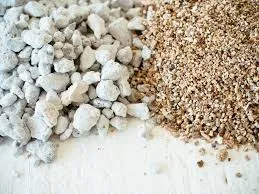Dec . 07, 2024 06:48 Back to list
Superior Molding Refractory Materials for High-Performance Thermal Applications
High-Quality Moldable Refractory Materials An Essential Guide
In the world of high-temperature industrial processes, the demand for reliable refractory materials is paramount. Among these, high-quality moldable refractory materials have garnered significant attention for their versatility, performance, and cost-effectiveness. This article explores the characteristics, applications, and advantages of these specialized materials, shedding light on their importance in various fields.
What are Moldable Refractory Materials?
Moldable refractory materials are advanced composites designed to withstand extreme temperatures while maintaining their structural integrity. Composed of high-alumina content aggregates, binders, and additives, these materials can be easily shaped and formed to fit specific applications. They are available in both air-setting and chemically bonded forms, enabling manufacturers to select the best option based on their processing requirements.
Characteristics of High-Quality Moldable Refractory Materials
1. Thermal Stability One of the most critical properties of moldable refractories is their ability to withstand high temperatures without deforming or losing strength. High-quality materials can endure heat exceeding 1200°C (2192°F), making them suitable for the most demanding environments.
2. Low Thermal Conductivity Effective thermal insulation is essential in industries such as steel manufacturing and ceramics. Refractory materials with low thermal conductivity help maintain high temperatures in furnaces while reducing energy consumption.
3. Chemical Resistance High-quality moldable refractories exhibit excellent resistance to a range of aggressive chemical environments, including acids, alkalis, and molten metals. This property is vital for ensuring longevity and performance in applications involving corrosive substances.
4. Moldability The significant advantage of moldable refractories lies in their ability to be formed into complex shapes. This property allows for better utilization of space and ensures that the refractory lining can fit seamlessly into any furnace or kiln design.
5. Workability These materials can be mixed, shaped, and installed with relative ease. This workability speeds up installation times and reduces labor costs associated with refractory repairs or replacements.
Applications of Moldable Refractory Materials
Moldable refractory materials are utilized across various sectors, including
- Metallurgy In the steelmaking process, these refractories are crucial for furnace linings, ladles, and other high-temperature components. Their ability to withstand thermal shock and corrosion from molten metal makes them indispensable.
high quality moldable refractory material

- Cement and Lime Industry High-quality moldable refractories are commonly used in kilns for producing cement and lime, where they deal with extreme thermal cycling and abrasive particles.
- Glass Manufacturing The glass industry also benefits from moldable refractories, which are used in forming molds and linings for glass melting furnaces. Their thermal properties ensure uniform heating and optimized production processes.
- Ceramic Industry In ceramics, these refractories are essential for kiln linings and production tools, where they must endure high temperatures while maintaining dimensional stability.
- Petrochemical and Chemical Processes Moldable refractories play a significant role in reactors and columns used in petrochemical industries, where they provide essential thermal protection and chemical resistance.
Advantages of High-Quality Moldable Refractory Materials
Investing in high-quality moldable refractory materials offers several benefits
1. Enhanced Lifespan Superior performance characteristics lead to longer service life, reducing the frequency and costs associated with repairs or replacements.
2. Flexibility Their moldability allows for custom solutions tailored to specific requirements, minimizing waste and optimizing resource utilization.
3. Cost Efficiency While high-quality materials may come at a premium, their durability and performance can lead to significant savings in maintenance and energy costs over time.
4. Improved Safety By utilizing resistant materials that can withstand extreme conditions, industries can enhance operational safety, reducing the risk of catastrophic failures.
Conclusion
High-quality moldable refractory materials are an essential component of many industrial operations, enabling efficient and safe practices in high-temperature applications. Their unique combination of thermal stability, chemical resistance, and moldability makes them a preferred choice for industries such as metallurgy, ceramics, and petrochemicals. As industries continue to evolve and demand higher efficiency and sustainability, the role of advanced refractory materials will only become more critical, ensuring that they remain at the forefront of technological advancements in high-temperature environments.
-
Eco-Friendly Granule Covering Agent | Dust & Caking Control
NewsAug.06,2025
-
Fe-C Composite Pellets for BOF: High-Efficiency & Cost-Saving
NewsAug.05,2025
-
Premium Tundish Covering Agents Exporters | High Purity
NewsAug.04,2025
-
Fe-C Composite Pellets for BOF | Efficient & Economical
NewsAug.03,2025
-
Top Tundish Covering Agent Exporters | Premium Quality Solutions
NewsAug.02,2025
-
First Bauxite Exporters | AI-Optimized Supply
NewsAug.01,2025
